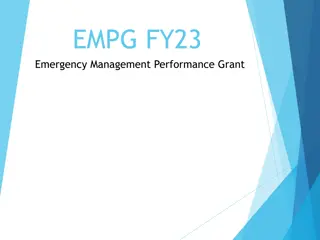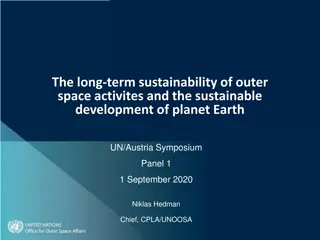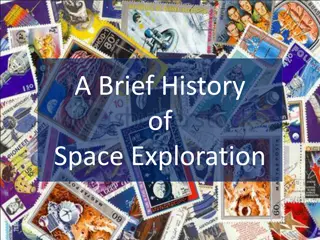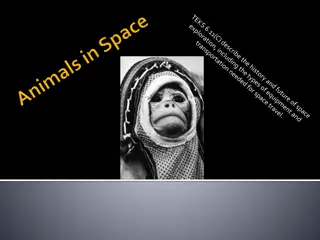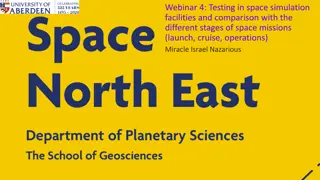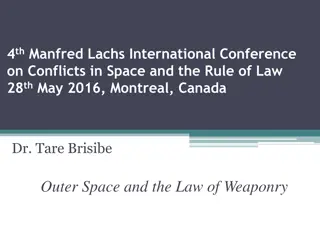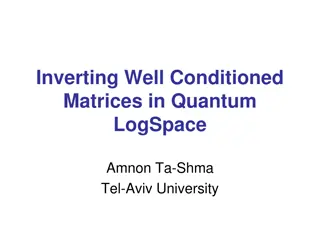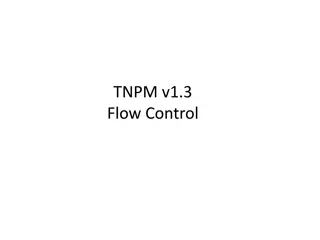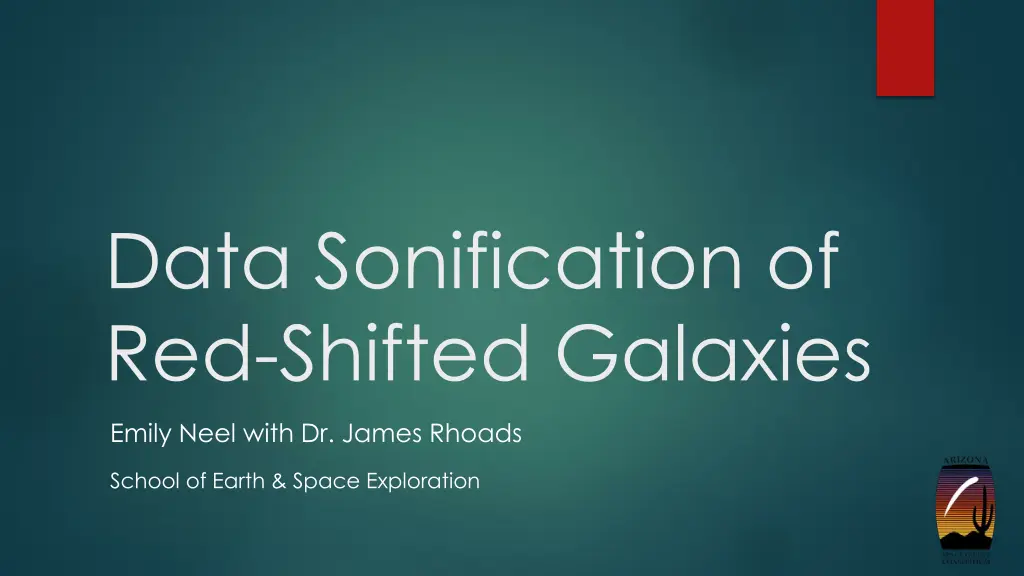
Sonification of Red-Shifted Galaxies and Emission Spectra Variations
Explore the intriguing project of converting wavelength data from red-shifted galaxies into sound frequencies for auditory analysis. Learn about emission spectra variations and their causes, such as elemental composition, ionization, and star formation history. Experience the world of astronomy through an innovative approach of combining light wavelengths with sound frequencies.
Download Presentation

Please find below an Image/Link to download the presentation.
The content on the website is provided AS IS for your information and personal use only. It may not be sold, licensed, or shared on other websites without obtaining consent from the author. If you encounter any issues during the download, it is possible that the publisher has removed the file from their server.
You are allowed to download the files provided on this website for personal or commercial use, subject to the condition that they are used lawfully. All files are the property of their respective owners.
The content on the website is provided AS IS for your information and personal use only. It may not be sold, licensed, or shared on other websites without obtaining consent from the author.
E N D
Presentation Transcript
Data Sonification of Red-Shifted Galaxies Emily Neel with Dr. James Rhoads School of Earth & Space Exploration
The Project: Taking emission spectra from red-shifted galaxies and converting the wavelengths of light into frequencies of sound, which can be played in audio software.
Emission Spectra Variations in emission spectra can be due to: Elemental composition
Emission Spectra Variations in emission spectra can be due to: Elemental composition
Emission Spectra Variations in emission spectra can be due to: Elemental composition Ionization Dust and gas Star formation history Distance from Earth
Producing Sound Convert wavelength to frequency ? ????????? = ????????? Lower the frequency range ????????? 1012
Producing Sound Sine oscillations Pink noise Red Shift Fourier transforms
Looking Forward User friendly Web interface
Sources: Image 1 Light Spectrum: http://commons.wikimedia.org/wiki/File:EM_spectrum.svg Image 2 Galaxy Emission Spectrum: http://www.hs.uni- hamburg.de/DE/For/Exg/Sur/hqs/publications/references/kniaze00.html Image 3 Elements Emission Spectra http://www2.astro.psu.edu/users/caryl/a10/lec6_2d.html

![Read⚡ebook✔[PDF] Linking the Space Shuttle and Space Stations: Early Docking Te](/thumb/21519/read-ebook-pdf-linking-the-space-shuttle-and-space-stations-early-docking-te.jpg)
![READ⚡[PDF]✔ Emerging Space Powers: The New Space Programs of Asia, the Middle Ea](/thumb/21554/read-pdf-emerging-space-powers-the-new-space-programs-of-asia-the-middle-ea.jpg)


